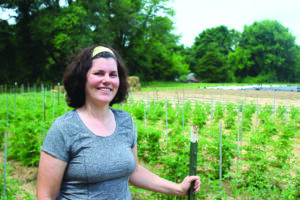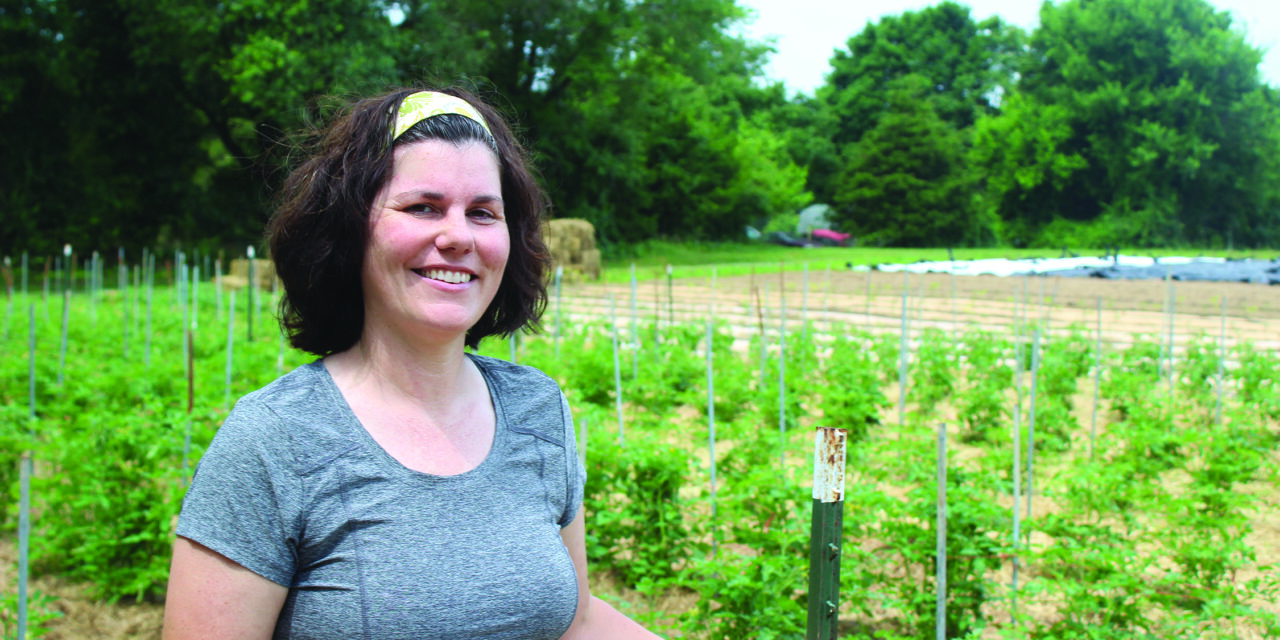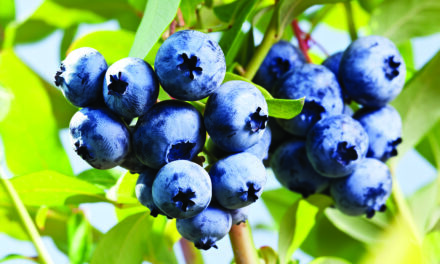
Andrea Davis-Cetina’s Quarter Acre Farm focuses on heirloom tomatoes and seedling plants, selling at the Easton Farmers’ Market. Running her own farm since 2008, she said she swears by electrical conduit as a lightweight but sturdy trellis system for her tomato crop. (Photo by Sean Clougherty)
Getting tomato plants off the ground as they grow is pretty much universal practice for home gardeners and larger farms alike. Where they may differ is on what’s the best way to do it.
Wire cages are popular for those with a few plants. Sturdy fencing “T-posts” often come into play with growers who have more than a couple rows, and many large farms up and down the Eastern Shore pound in wooden stakes to start their trellis system.
At Quarter-Acre Farm in Ridgely, tomatoes are the main crop and farmer Andrea Davis-Cetina keeps a specific criteria for staking tomatoes to ensure lots of quality fruit.
With a few thousand plants on her farm, pounding heavy T-posts every two plants is too laborious. She found early in her career that electric conduit works great and is reusable year after year.
“I think I’ve gotten five years out of some of it,” she said.
A standard 10-foot length of conduit cut in half makes two stakes at about the third of the cost of a T-post and goes in the ground much easier.
“It’s plenty strong,” she said of the conduit. “The important thing is having the T-post (at the end of the rows) as the anchors.”
She also puts a T-post about every 50 feet on long rows for adequate support.
While Davis-Cetina aims to limit the plastic that gets used in her fields, baling string is a crucial component because it doesn’t stretch after it’s strung upon the stakes.
On Quarter Acre farm, Davis-Cetina wants the twine “guitar string tight” to hold the plant up as it grows.
As the plants grow, Davis-Cetina and crew go up and down the rows at least three times with about 12 inches of space between strings. If there’s more space on the four foot-plus conduit, and time on the farm to do it, she’ll add a fourth string. The trellis helps with air flow in the field too, gets fruit off the ground and contributes to plant health and vigor.
Based on the Florida Weave method, Davis-Cetina said the basic concept is to sandwich the plants better two strings.
After tying the string to the end post, she runs twine on one side of the plants and loops around the conduit. For the next two plants, she runs the twine on the other side of the plants, looping around the conduit and pulling the sting tight each time.
She’ll zig-zag that way to the other end of the row, loop around the other end post and come back down the row, mirroring the other side. She said it might be a little more complicated than other farmers, but she’s found it’s been the best for her to keep the string tight throughout the process and hold up the plant through the season.
“Everyone has their own technique,” she said.
Davis-Cetina said her system makes sense if you’re growing more than half a dozen plants, less than that, she says just put a stake at each plant and tie off the plant to the stake.
She said she’s not a fan of cages as they limit space for the plant.
A sound trellis is part of the package that will have she and her crew picking tomatoes until Halloween or later.
“We’re able to keep them in a happy, productive state.,” she said.





